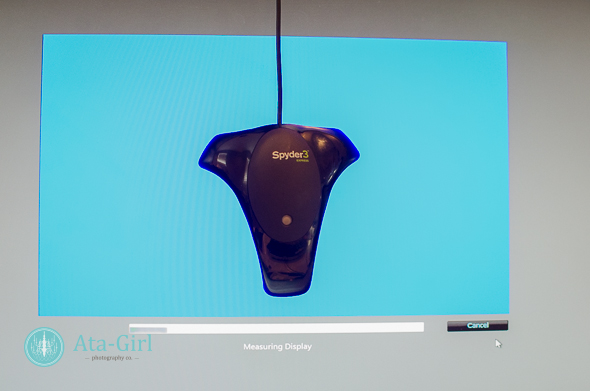Monitor Calibration
In the last few weeks, I’ve written a few posts that discuss the importance of having a consistent color in your images. I’ve detailed what happens when you take an image that recorded the color correctly to a lab that doesn’t consider accurate color as a priority. I also suggested a professional-level lab who does care about color and will print your images for you. What I would like to discuss today is monitor calibration. If you’ve ever shopped for a television, you will understand exactly what I’m talking about. Each television is calibrated differently. Therefore, when you stand and look at all the screens, it’s really difficult to determine which TV has the best picture because they’re not calibrated. The brightness, color, contrast and vibrancy of each television is all over the place. Computer monitors are exactly the same way.
(I’d have a nifty photograph to demonstrate the vast differences in a television display at a local retailer, BUT the three times I went to take the image, (1) I forgot my camera, (2) I forgot to insert the memory cards, and (3) When I had both the camera and memory cards, I forgot to take the picture.
So, how can we make sure the image we took in our camera and view on our monitor will print the same way? We calibrate our monitor to an industry standard.
Monitor Calibration

Monitor calibration requires a tool to measure brightness, color, contrast, and vibrancy. I use a Datacolor Spyder. After the measurements are made, a profile is created. The profile is then referenced each time you utilize certain photo editing softwares like Adobe Photoshop and Lightroom, for example.

On average, I create a new profile every week to ten days. However, the light you are working in will effect your monitor’s color display. For instance, your display will look differently at 12 noon near an open window than it will at 3:00 am with no other lights on. If you work in wildly different lighting situations, it is important to calibrate for each of those particular working conditions.
I hope this short tutorial explains why it is important to calibrate your monitor. If it doesn’t, the next time you’re at a retail store, take a good look at the television display. You’ll see what I mean.
Until next time, be positive, happy, and healthy, and don’t forget to be photographed.
_______________________________________________________________________________
 I am a San Antonio-based wedding and senior photographer who started Ata-Girl Photography Co., LLC in 2010. As one of the up-and-coming San Antonio wedding photographers, I am also available to shoot in Austin, Houston and Dallas and the surrounding areas. I am also available for destination weddings worldwide. Ata-Girl Photography Co. offers an amazing wedding photography service that you won’t soon forget. As a professional photographer, my sole purpose is to provide you the absolute best photography experience.
I am a San Antonio-based wedding and senior photographer who started Ata-Girl Photography Co., LLC in 2010. As one of the up-and-coming San Antonio wedding photographers, I am also available to shoot in Austin, Houston and Dallas and the surrounding areas. I am also available for destination weddings worldwide. Ata-Girl Photography Co. offers an amazing wedding photography service that you won’t soon forget. As a professional photographer, my sole purpose is to provide you the absolute best photography experience.
I am a professional photographer who enjoys documenting the important milestones and captivating moments in people’s lives. I firmly believe that the unique set of circumstances I have faced in life has prepared me to take a personal and genuine interest in my photography clients. When I’m not photographing a wedding, family or high school senior, I enjoy watching my daughter play softball, hiking, cycling, reading, and listening to Elvis!
The post, Monitor Calibration, first appeared on Ata-Girl Photography Co’s website and blog. Please feel free to comment here, or share this post with your friends via Facebook, Twitter or Pinterest. Please email me if you have any questions about this article or want to share a neat idea for a future blog post with me.



